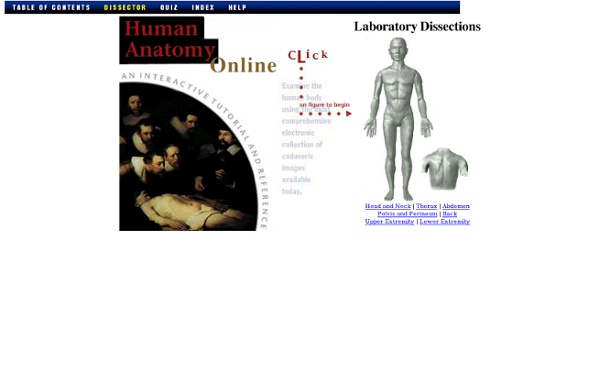



Digital Learning Day Do you want to use more digital learning to meet the needs of each of your students? Teachers, librarians, and instructional coaches from across the country have helped us to develop these toolkits that are ready for you to use today! These toolkits are not the totality of good information available; instead, they are designed to provide a few ideas about how technology can enhance the educational experience for students in the topic areas addressed. Digital Learning Day 2015 295 days until February 4, 2015 WebAnatomy- labled diagrams and good quizes Quiz Bowl and Timed Test were retired at the end of summer 2013. Quiz Bowl had always been buggy, as many people had pointed out, and it had become difficult to maintain. It also used technology that doesn’t work on a lot of newer computers or tablets. Timed test depended on a browser add-on that both Microsoft and Apple have encouraged users to remove for security concerns. For these reasons, we took these two quizzes down at the end of the month. Looking for the Image Bank? Conference for High School Anatomy and Physiology Instructors - October 17 and 18, 2014 - Minneapolis, MN.
Anatronica | Interactive 3D Human Anatomy | Explore Human Body Digital Anatomist Interactive Atlases Structural Informatics GroupDepartment of Biological StructureUniversity of Washington Seattle, Washington, USA Atlases Content: 2-D and 3-D views of the brain from cadaver sections, MRI scans, and computer reconstructions.Author: John W. SundstenInstitution: Digital Anatomist Project, Dept. Content: Neuroanatomy Interactive Syllabus. Atlas was formerly available on CD-ROM (JAVA program running on Mac and PC platform). Content: 3-D views of thoracic organs reconstructed from 1 mm cryosections of a cadaver specimen provided by Wolfgang Rauschning.Authors: David M. Atlas was formerly available on CD-ROM. Content: 2-D and 3-D views of the knee from cadaver sections, MRI scans, and computer recontructions.Author: Peter Ratiu and Cornelius RosseInstitution: Digital Anatomist Project, Dept. FAQHelp on Program UseSoftware Credits and CopyrightPrivacy and advertising policiesAbout the Structural Informatics Group
Gráficos | elmundo.es Ciencia Parques eólicos marinos 'Offshore' Para lograr reducir las emisiones de C02, se apuesta por el uso de energías renovables y se aboga por aprovechar las posibilidades que ofrece el mar. España aún no cuenta con ningún parque eólico marino a pesar de que es el tercer país, con 5.000 km de costa, que más energía eólica terrestre produce en el mundo, tras EEUU y Alemania. Ver gráfico Breve historia de los premios Nobel Los Premios Nobel se conceden cada año a personas, entidades u organismos por sus aportaciones extraordinarias realizadas durante el año anterior en los campos de la Física, Química, Fisiología y Medicina, Literatura, Paz y Economía. Ver gráfico Así es el catamarán-trineo polar Del 1 de diciembre de 2011 al 20 de enero de 2012 se llevó a cabo la primera expedición la Polo Sur geográfico en un trineo impulsado únicamente por el viento. Ver gráfico Salto desde la estratosfera Ver gráfico
Moore - Essential Clinical Anatomy - userlogin Essential Clinical Anatomy, Third Edition presents the core anatomical concepts found in Clinically Oriented Anatomy, Fifth Edition in a concise, easy-to-read, and student-friendly format. This streamlined book is the ideal primary text for health professions courses with brief coverage of anatomy and functions as a convenient review for medical students. This updated edition features new full-color surface anatomy and new diagnostic images. All of the artwork has been updated to provide greater clarity, and a new design allows for easier navigation and understanding. Essential Clinical Anatomy, Third Edition now includes free online student resources with 145 interactive clinical cases, 135 USMLE-style review questions, and more! Other Product Details All Materials Copyright ©2014 by Lippincott Williams & Wilkins.
Respiratory System by Ben Leonard on Prezi 6 Virtual Tours Of The Human Body For Free Interactive Anatomy Lessons When it comes to interactive virtual views, we have gone to space and around the globe. So, it’s not surprising that we are also going within ourselves on a virtual journey of the human body. One of the finest tools available online is Visible Body. Unfortunately, it’s not free anymore. But you can see the beauty of it thanks to the free demo that allows you to explore the head and neck. If you are disappointed that there aren’t any free interactive anatomy tools, worry not. Google Body You can trust Google to take you everywhere. The Google Body browser is a Google Labs project that renders on Google Chrome and any other browser that supports WebGL (like Firefox 4 Beta). MEDtropolis The interactive website aims to educate entertain both kids and adult on bodily health; understanding the human anatomical structure is just part of the process. For instance, check out the narrated tours on Virtual Body. eSkeletons eSkeletons isn’t only about understanding human anatomy. DirectAnatomy
150 herramientas gratuitas para crear materiales didácticos on line más de 150 herramientas gratuitas para crear materiales didácticos on line Generadores de cuadernos, libros y publicaciones digitales Cuadernia online (Consejería de Educación y Ciencia de Castilla-La Mancha). Generadores de webquest y cazas del tesoro 1,2,3 tu WebQuest generador de webquest de Aula 21. Generadores de cuestionarios y ejercicios Generadores de cuestionarios de autoevaluación (4Teachers). Generadores de listas, sopas de letras y tarjetas de vocabulario Generador de tarjetas de vocabulario en PDF (Personal Education Press). Generadores de hojas de caligrafía y papel pautado Ver también la sección Lectoescritura, grafomotricidad y alfabetización Generador de hojas pautadas para caligrafía en diversos tamaños de cuadrícula y en formato PDF para imprimir (Olesur.com).Generador de hojas de caligrafía a partir de textos propios (blog Olesur.com). Generadores de mapas conceptuales y mentales Generadores de letras, cuentos, textos y nubes de palabras Generadores de mosaicos y puzzles